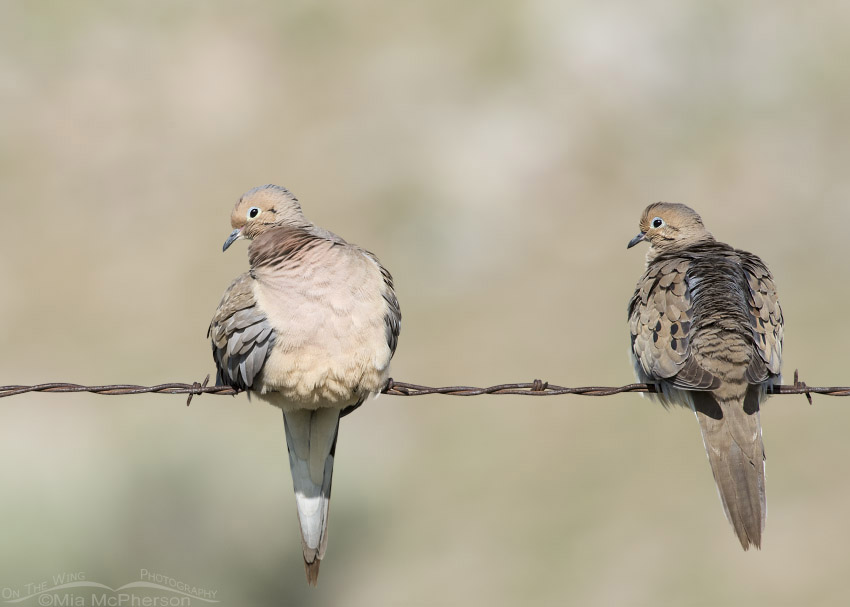I am always happy to see Mourning Doves on my photographic journeys instead of the rapidly spreading, invasive Eurasian Collared-Dove. Last month while looking for owls in northern Utah I found a mated pair of Mourning Doves resting side by side on a barbed wire fence.
I had been wanting to get a pair close together to show the differences between the male and female and although I wish that both of the birds had been facing me this image does show some of the differences.
 Pair of Mourning Doves – Nikon D810, f14, 1/320, ISO 400, +0.3 EV, Nikkor 500mm VR with 1.4x TC, natural light
Pair of Mourning Doves – Nikon D810, f14, 1/320, ISO 400, +0.3 EV, Nikkor 500mm VR with 1.4x TC, natural light
The male Mourning Dove is on the left and the female is on the right in this image that I created last month in Box Elder County, Utah. Male Mourning Doves have a bluish gray cap that extends down the nape with a rosy tint on the face, breast and neck and the females have a more of an olive gray cap and nape, a brown hue on their faces and their breasts are more tan than rosy. If this female were facing the same direction as the male the tan color of her breast would show but the olive gray cap and nape are clearly visible.
I’ll keep trying to get an image where both doves are facing the same direction and side by side to show the differences better.
Eurasian Collared-Doves are larger and far more aggressive than our native Mourning Doves and often chase the smaller doves away from food. When I first moved to Utah in 2009 I didn’t see many collared doves but I see plenty of them now and in locations where I hadn’t seen them previously.
Life is good.
Mia
Click here to view more of my Mourning Dove photos plus facts and information about this species.


Lovely soft colours.
Here we go again…another introduced, non-native taking over….
Beautiful photo, Mia.
Ah, what’s not to love about doves, of any species?
Very nice Mia. ;-)))
We are being overrun with Collared Doves down here in Arizona, so much so that in some areas they have become dominant. They’re more aggressive than our Mourning Doves and, although they’re smaller than White-winged Doves, they seem to be able to out-compete them as well.
Beautiful photos and nice illustration of the sex differences between male and female.